Medieval Colonization of the Český Krumlov Region
From the half of 12th century was proceeding so-called 'medieval colonization' in Bohemia when were established hundreds of new settlement, villages, market-towns, towns, castles and monasteries though many of them extinguished during times and until today only unsettled remainders and ruins, local names or rigorous mentions are preserved from them. Aristocratic families and church friaries in particular had merit in medieval colonization of the Český Krumlov region even thought the first pioneers came there a long time before.
The oldest-known medieval administration center in the Český Krumlov region is documented owing archaeological discoveries in locality Boletice already in the 6th - 8th century. Later the locality was infuenced of Doudlebové tribe and Slavníkovci family. Early medieval settlement in Boletice is also documented by originally Romanic church of St. Nicolas from the 12th century. The ecclesticial friaries started medieval colonization of borderland first because the first written mention is from 1037 when Czech Duke Břetislav presented village Zátoň to Ostrov's Benedictine friary which allowed to build small monastery before 1310 and from the half of the 12th century village Svéráz pertained to Strahov Premonstrate monastery. In the end of 12th century Vítkovci noble family had domiciliated in the Český Krumlov Region where they were founding their resinences from half of the 13th century. Also Cistercial friary attended to systematic colonization. But most of the new settlements were founded during 14th century.)
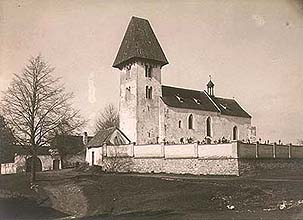
|
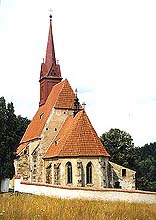
|
Considerable influence for colonization of this border area of Czech kingdom in 13th century had trade routes (Historical Routes in the Český Krumlov Region) and the routes for tranportation of salt from Austrian Alpes and Germany to czech upcountry. Throught Český Krumlov Region led a few branches of so-called Linz Route already from 12th century and its direction was influenced by Šumava forests and run of Vltava river. Main route led from Linz over Leonfelden to Vyšší Brod, Rožmberk, Zátoň and Přídolí, continued throught Český Krumlov, Boletice and Chvalšiny to join Golden Route or to České Budějovice. Second branch of this route went from Linz over Cáhlov (today's Freistadt), Dolní Dvořiště, Kaplice and Velešín to České Budějovice. Other trade routes led from Austria by way of Frymburk or from Germany throught Horní Planá. Along of these routes were gradually arising trade villages and tributary towns too.
Mainly noble family of Vítkovi had merit in colonization of sparsely settled areas of the Český Krumlov Region. By the legend, founder of this noble family was Vítek of Prčice ( + 1194 ). By heraldry legend he divided his property among his five sons so the family of Vítkovci had five branches from that time - Lords of Krumlov, of Rožmberk, of Jindřichův Hradec, of Landštejn and of Stráž with corporate heraldry symbol of five-petalled rose. The oldest site connected with activity of Vítkovci in region was village Přídolí, mentioned already in 1220. Apparently the oldest Vítkovci's residence was Castle Rožmberk which was mentioned in written in 1250 even it is evident the castle was there in that time and its establishing reach back to the first half of 13th century. The first documented owner was Vok of Rosenberg. In the same time was rising Krumlov castle which was mentioned in 1253 firstly. Castle, small stronghold with tower, was probably built in the first half of 13th century. The trade village arose in the loops of Vltava soon after and documented already in 1309 as the town. Value of Krumlov castle growth after 1302 when it became the residence of Rosenberg family because Lords of Krumlov died out. In boundary deep forests around the half of 13th century was reared Vítkův Hrádek as sentry castle. Most castles here were built during the reign of Czech king Václav I. (1230 - 1253) when the royal and lord's castles were constucted and it was popular to give them german names. The youngest medieval Rosenberg's castle in Český Krumlov region was Dívčí Kámen founded in 1349.

|
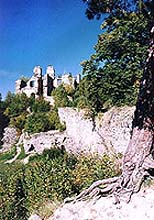
|
Also establishing of cistercian monasteries in Vyšší Brod and in Zlatá Koruna was part of medieval colonization of Český Krumlov region in the half of 13th century. Although the first mentions about Vyšší Brod, village at trade route, are from 1257, the monastery was founded here by Vok of Rosenberg not until 1259 as acknowledgement for saving his life in flooded Vltava river and by the wish of founder was located there the repository of Rosenberg family. To Vyšší Brod he called cistercian friars from Wilhering near Linz that there were continuing in founding further villages. Colonization of this region was not only under control of Vítkovci but also commanded by Czech emperor Přemysl Otakar II. who wanted to strengten royal influence in the region and to stop further expansion of Vítkovci to upcountry. Therefore he found in 1263 cistercian monastery of Zlatá Koruna as counterweight of Vyšší Brod and in 1265 he established new royal town České Budějovice. Irreconcilable position of Vítkovci to new royal estates culminated in raiding parties in monastery of Zlatá Koruna in 1276 and also České Budějovice was plundered in 1278. Soon after, both monasteries became important centres of education and clerical culture.
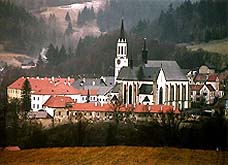
|

|
Till the end of 13th century the founding of many new settlements are reminded in Český Krumlov region. But systematic colonization started in 14th century when were growing ten of new villages mostly settled by german inhabitants. By the mentions, in 13th century there were about 50 villages and during 14th century arose next 90 new villages. From villages situated close to lord's castles, monasteries or at trade routes became the towns with privileges to arrange week and annual fairs, use its own seal, brew beer for its own consumption or to practise guild craft production. In that time had status of serfdom towns Český Krumlov and Rožmberk with market-towns which grew during 14th century such as Dolní Dvořiště, Dolní Vltavice, Cetviny, Frymburk, Horní Dvořiště, Horní Planá, Hořice na Šumavě, Chvalšiny, Kaplice, Křemže, Přídolí, Rožmitál na Šumavě, Rychnov nad Malší, Vyšší Brod and Velešín.

|
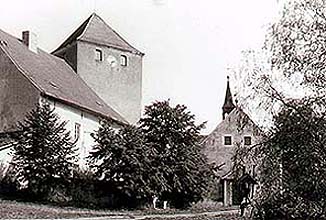
|
In the Český Krumlov region resided not only might families of Lords of Krumlov and Rosenbergs but also many regents and yeoman families which lived in their strongholds and castles. Appreciable property and influence had in 13th century Bavors of Strakonice that were tightly connected with families of Chlum, of Křemže and of Pořešín. Next line which considerably influenced colonization of the region were Lords of Michalovice that owned Castle Velešín , Castle Sokolčí and Stronghold Benešov. Their origin came from lord's family of Markvartice. Among powerful regent families also belonged Pouzars of Michnice, Višeňs of Větřní or Lords of Cipín. During 14th and 15th century Rosenbergs started to reinforce his position in the region therefore they were buying or taking residences of lower nobility and it led to abandoning, gradual dilapidation and wrecking or purposeful destroying of castles and strongholds in the Český Krumlov region. (See Noble families in the Český Krumlov Region)
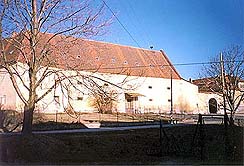
|
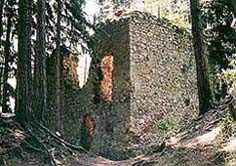
|
(mj)
Further information :
Castles,
Chateaux, Monasteries and Other Memorials in the Český Krumlov
Region
Architecture
in the Český Krumlov Region
The
First Mentions about Villages and Settlements in the Český Krumlov
Region
Czech-German
alphabetical list of village names
Demographic
Evolution of Český Krumlov
Demographic
Evolution in the Český Krumlov Region
History
of the Český Krumlov Region
Prehistorical
Settlement of the Český Krumlov Region
www.cetviny.cz


